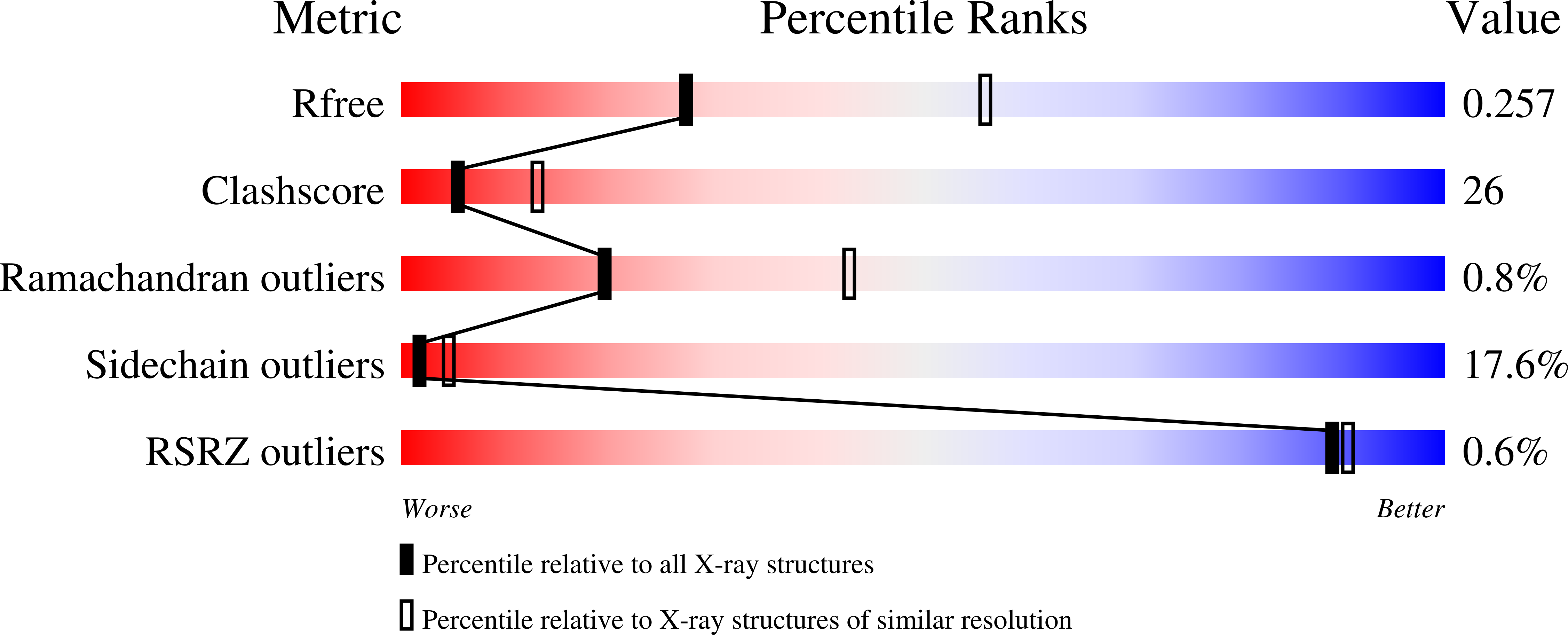Self-Chaperoning of the Type III Secretion System Needle Tip Proteins Ipad and Bipd.
Johnson, S., Roversi, P., Espina, M., Olive, A., Deane, J.E., Birket, S., Field, T., Picking, W.D., Blocker, A.J., Galyov, E.E., Picking, W.L., Lea, S.M.(2007) J Biol Chem 282: 4035
- PubMed: 17077085
- DOI: https://doi.org/10.1074/jbc.M607945200
- Primary Citation of Related Structures:
2IXR, 2J0N, 2J0O, 2J9T, 2JAA - PubMed Abstract:
Bacteria expressing type III secretion systems (T3SS) have been responsible for the deaths of millions worldwide, acting as key virulence elements in diseases ranging from plague to typhoid fever. The T3SS is composed of a basal body, which traverses both bacterial membranes, and an external needle through which effector proteins are secreted. We report multiple crystal structures of two proteins that sit at the tip of the needle and are essential for virulence: IpaD from Shigella flexneri and BipD from Burkholderia pseudomallei. The structures reveal that the N-terminal domains of the molecules are intramolecular chaperones that prevent premature oligomerization, as well as sharing structural homology with proteins involved in eukaryotic actin rearrangement. Crystal packing has allowed us to construct a model for the tip complex that is supported by mutations designed using the structure.
Organizational Affiliation:
Laboratory of Molecular Biophysics, Department of Biochemistry, University of Oxford, South Parks Road, Oxford, Oxon OX1 3QU, United Kingdom.
















